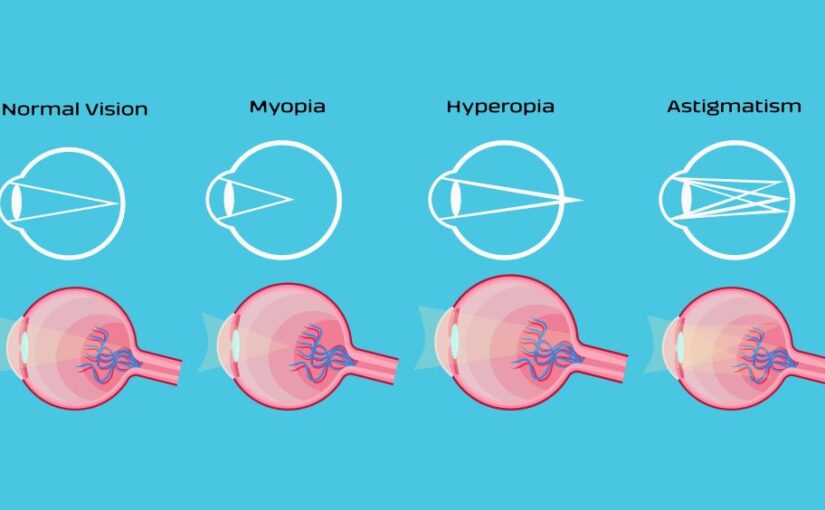If your vision isn’t perfect, you are in good company: nearly 70% of American adults need prescription lenses. Most vision problems are caused by a refractive error, which is an irregularity in the shape of the eyes that prevents incoming light from focusing correctly on the retina. The three main types of refractive errors are nearsightedness, farsightedness, and astigmatism. In this blog, the expert doctors at Vista Eye Specialists briefly describe the differences between these refractive problems so that you can better understand what your diagnosis means.
Nearsightedness
Also known as myopia, nearsightedness is a condition where the eye can readily see objects up close but not easily discern objects in the distance. It affects nearly four out of every 10 Americans. Usually, myopia is caused by a slightly elongated eyeball. The oval-like shape of the eye causes the incoming light to refract before it reaches the retina. This problem typically gets worse throughout childhood until vision stabilizes at around age 20.
Farsightedness
In contrast to nearsightedness, farsightedness (aka hyperopia) is a condition where eyes have an easier time seeing objects in the distance, while objects up close are blurrier. It affects about one out of every 15 Americans. This irregularity is the result of having corneas that are flatter than average. Without the proper curvature, the light bends behind the retina. Although hyperopia can worsen over time, it is usually present from birth.
Age-related presbyopia, develops in all adults starting after age 40. This occurs because the lens gets stiffer and inflexible with age, making it more difficult to focus on objects up close.
Astigmatism
Astigmatism occurs when the eye’s cornea or lens has an atypical curvature, causing light to refract irregularly. This may create blurry vision at one or more distances. About one in three Americans has astigmatism. Some people even have myopia or hyperopia in addition to astigmatism.
Correcting Refractive Errors
While most people choose prescription lenses to correct their nearsightedness, farsightedness, or astigmatism, many find that depending on glasses and contact lenses is a hassle. For a permanent solution, our ophthalmologist, Dr. Binoy Jani, offers LASIK/PRK. He is certified and experienced in the use of the advanced Femtosecond and excimer lasers, which provide the utmost precision to reshape the cornea and achieve clear vision.
To learn more about LASIK from Dr. Jani and determine whether you are a good candidate for refractive surgery, please schedule a consultation by calling 1-888-393-5264 today.


